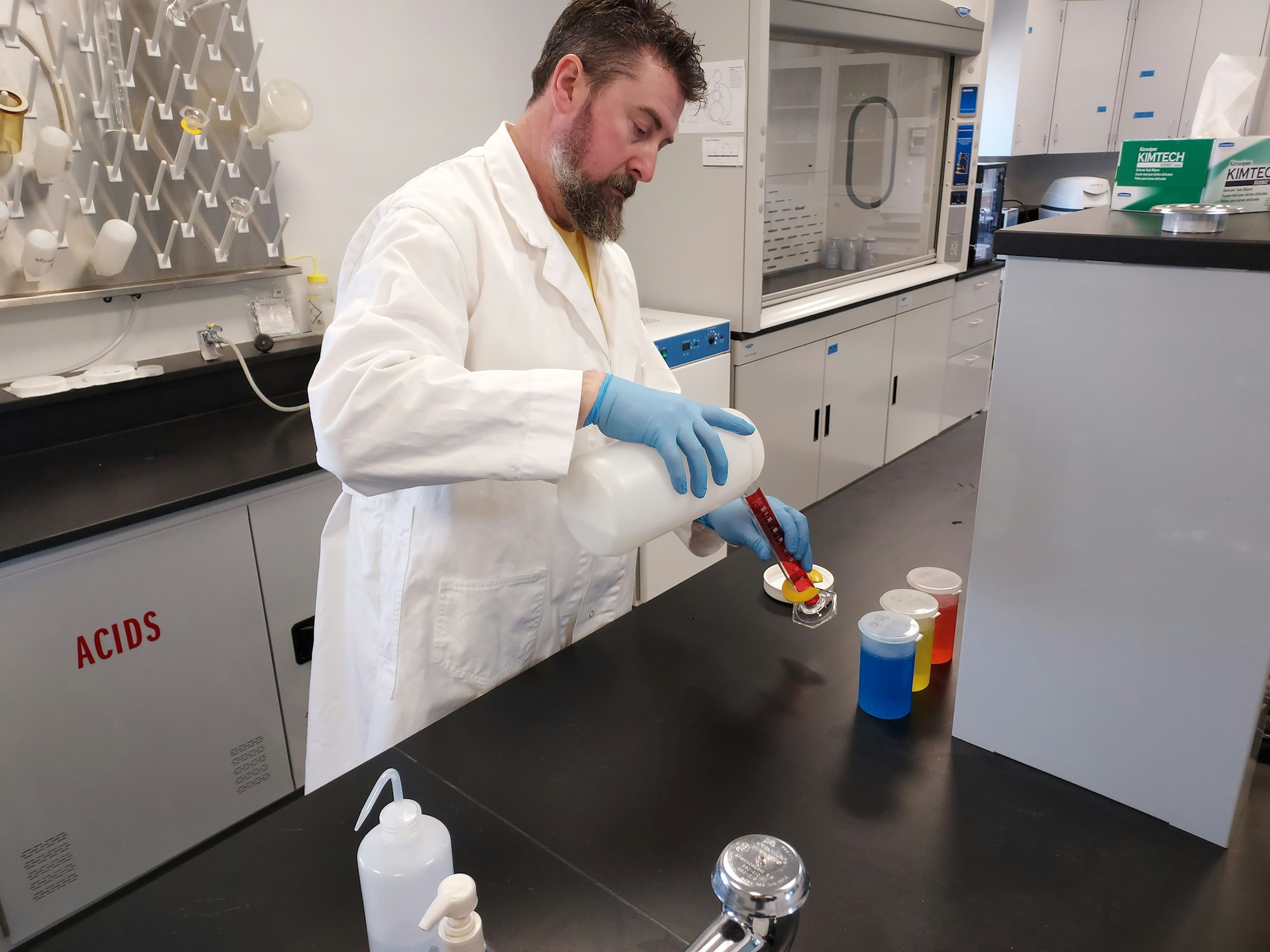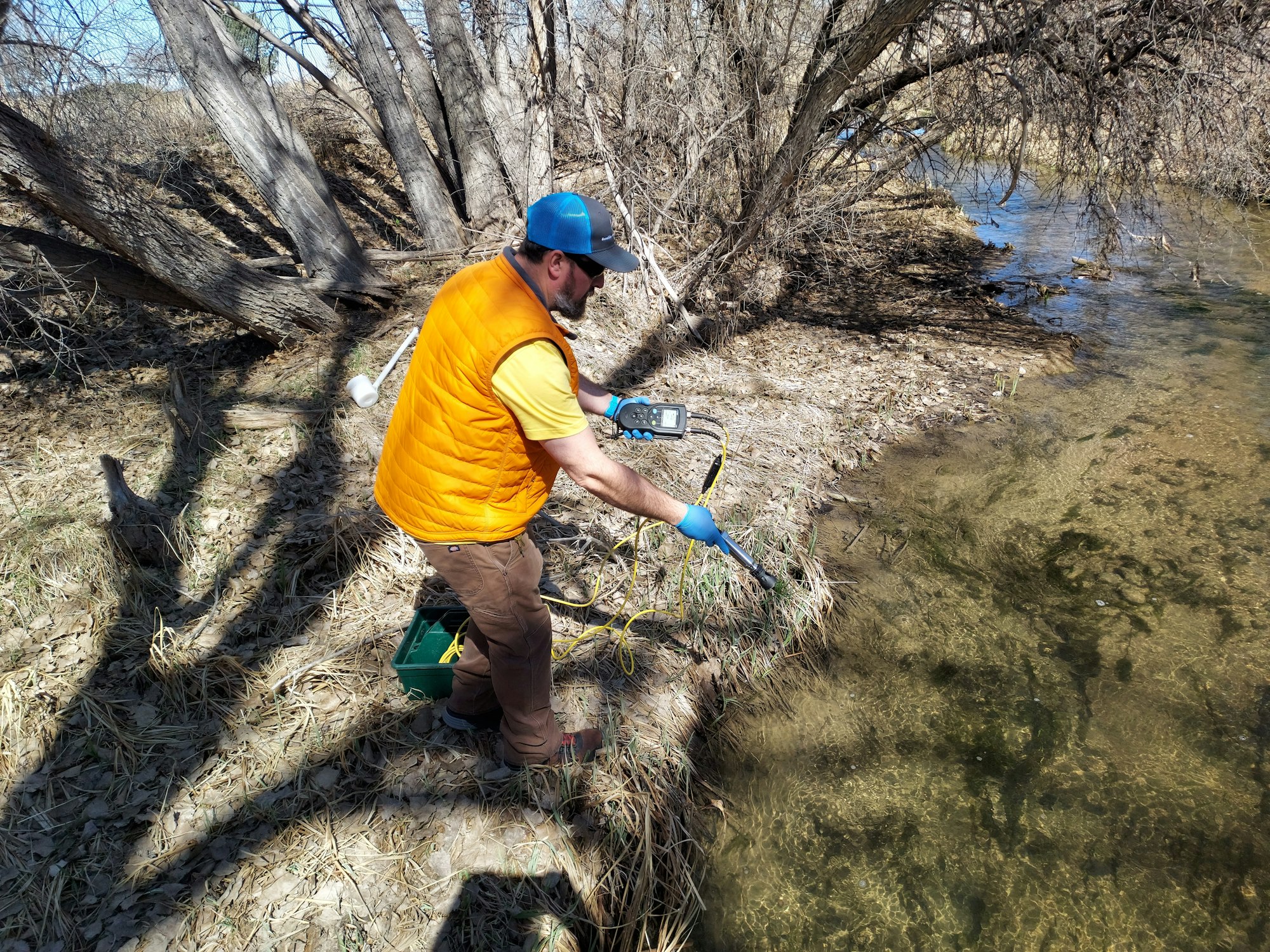March 3, 2025 - Behind the Scenes at Our Wastewater Treatment Lab
Wastewater treatment is essential for maintaining public health and protecting the environment, but have you ever wondered about the science behind the process? While we have talked about pretreatment and the water treatment process in recent communications, we’re taking time to spotlight the laboratory this quarter. At the heart of our wastewater treatment facility is our lab—a hub for testing, monitoring and ensuring compliance with strict regulations. Let’s explore the critical role of the lab, its functions and how our community can help keep our water clean.

Ensuring Compliance and Efficiency
The lab plays a dual role: maintaining compliance with state and federal permits required to operate the facility and providing operational support for the treatment plant. Compliance requirements specify what needs to be tested, how often and for what parameters. This includes testing influent (incoming water) and effluent (treated water) to ensure the facility meets all discharge requirements. Effluent testing is especially critical, as it confirms the treated water is safe for release back into the environment. We release water back into the Poudre River and know how important this river is to our community. So, beyond compliance issues, the lab helps us ensure we are a good community member by returning high-quality water to the river.
In addition to compliance testing, the lab conducts operational testing to help plant operators make informed decisions. For instance, they analyze how solids settle, measure the population of microorganisms (“bugs”) that help break down waste and monitor other factors that ensure the plant operates efficiently.
Advanced Technology and Sampling
Modern wastewater labs rely on state-of-the-art equipment to handle their rigorous testing schedules. As part of our last plant expansion, our lab is equipped to perform much of the required testing. Automatic sampling machines mechanically grab water samples from the flow streams, depositing them into a rotating disk filled with vials. This automated process allows the lab to collect consistent and reliable samples.
While the lab performs many tests in-house, it also sends samples to external labs for more complex analyses, such as testing for heavy metals or emerging contaminants. This partnership ensures accurate results and reporting. This data allows us to track these contaminants over time and log trends, giving us a clear picture of what is coming into the wastewater treatment plant.
What Does the Lab Test For?

The lab monitors several key parameters:
- Biochemical Oxygen Demand (BOD): Measures the oxygen required to break down organic material. This is a critical indicator of water quality.
- pH Levels: Indicates how acidic or basic the water is. Sudden pH spikes—often caused by improper disposal of cleaning agents—can disrupt the treatment process and harm the microorganisms that play a vital role.
- Temperature: Ensures that water is within acceptable ranges for both treatment and environmental discharge.
- Phosphorus and Nitrogen: Excessive amounts of these nutrients can cause harmful algal blooms in natural water bodies.
Less frequent tests include monitoring for heavy metals like mercury, lead, zinc and cyanide. Although less common, these contaminants pose significant environmental and health risks if not properly managed.
The PFAS Challenge
One of the most significant emerging challenges in wastewater treatment is dealing with PFAS (per- and polyfluoroalkyl substances). Known as “forever chemicals,” PFAS are resistant to breaking down in the environment and are found in a variety of household products.
PFAS research is ongoing. The EPA has identified over 14,000 chemicals under the banner of PFAS, and that list is growing. Many of these are household cleaners, waterproof fabric applications, or even cosmetics. Sometimes, these chemicals are rinsed down a drain and make their way to our wastewater treatment plant, which is why we are closely monitoring information released by the EPA as it becomes available.
How Boxelder Customers Can Help
The wastewater treatment process is highly sensitive to what enters the system. Improper disposal of household and industrial items can have a significant impact on both the treatment process and the environment. For example:
- Cleaning Agents: Many cleaning products cause sudden pH spikes, which can harm the microorganisms that break down organic material.
- Solvents and Chemicals: Dumping solvents down the drain is not only harmful to the treatment process but is also illegal in many cases. Industrial pre-treatment programs maintain a list of prohibited substances to prevent contamination.
When in doubt, take your hazardous waste to the Larimer County Landfill, where their hazardous waste program helps households properly dispose of cleaning agents, solvents and chemicals. They also have a helpful program called Drop N’ Swap, where you can get items for free that you can use around the house, like paint, herbicide or camp stove fuel. According to their website,
“Thirty thousand pounds of hazardous household products are reused through the Drop 'N' Swap program each year, keeping them out of the landfill and out of groundwater. The best way to dispose of chemicals is to use them up as they were originally intended to be used, which is just what this program does. And, of course, it’s free!”
By being mindful of what we pour down our drains and properly disposing of chemicals and solvents, our community can help Boxelder operate more effectively and protect our shared environment.
We Love Our Lab and Lab Team!
Boxelder’s lab is more than just a testing facility—it’s the backbone of the entire operation. From ensuring compliance with regulatory standards to tackling emerging contaminants like PFAS, the lab plays a vital role in protecting our water resources. Through advanced technology, rigorous testing and community collaboration, wastewater treatment facilities continue to safeguard public health and the environment for generations to come.
